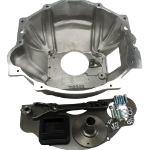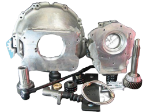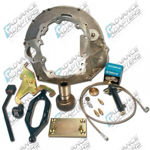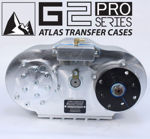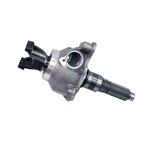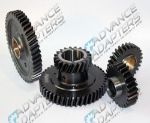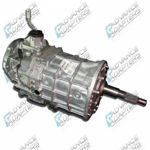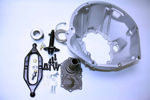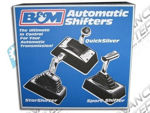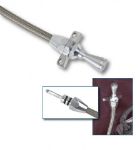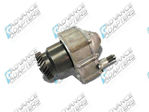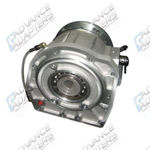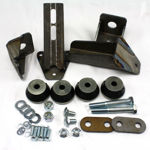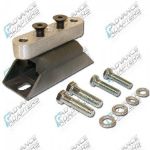Advance Adapters sells a large assortment of transfer cases and accessories to go off-roading. But if you're new to customizing an SUV or truck, you might wonder what a transfer case is and why you need one for your vehicle.
Outside the off-road and heavy-duty market, you don't hear much about transfer cases. But they are a crucial component - not just in four-wheel-drive and all-wheel-drive rides, but just about every vehicle. So what is the transfer case, and what does a transfer case do? In this guide to transfer cases, we'll look at how they work and the importance of installing one. Whether you prefer exploring trails, jumping dunes or crawling over rocks, we'll help you get the best performance.
How a Transfer Case Works
The transfer case is part of a vehicle's drivetrain. It's what transfers engine power and torque from the transmission to the driveshafts. In turn, the driveshafts carry that power to the axles. A transfer case also coordinates the front and rear axle rotation, splitting power as needed to keep the rotation uniform and reduce the chances of wheel spin.
In some ways, transfer cases function much like differentials. The difference is that the transfer case sends power to the entire axle(s) while a differential sends power to two different wheels on the same axle. It is common for modern off-road vehicles to have both a transfer case and differentials to control torque. Many sports cars and high-performance cars also have this combination to give them maximum acceleration and traction.
Is the Transfer Case the Same as a Transmission?
In short, no. The transmission multiples the engine torque based on predetermined ratios, creating a usable output for the rest of the drivetrain. A transfer case shifts this power to the front and rear axle in conjunction with the driveshaft. While some transfer cases can further multiply (or divide) the transmission output, they are not able to create that output. It's better to think of a transfer case as either an expansion package to a transmission or a separate part of the drivetrain.
Off-Road Transfer Cases
When choosing a transfer case, you'll often have a choice between a chain-driven or gear-driven case. Most modern transfer cases are chain-driven because they are quieter and lighter. Although this is typically fine for everyday driving, many off-roaders prefer the older gear-driven transfer case design. They can handle more torque and won't stretch like chains sometimes do.
In addition to the drive design, the transfer case for an off-road vehicle can have many other configurations. Some four-wheel-drive transfer cases can lock the front and rear driveshafts to ensure the torque is equal for both. You may also have the option to purchase a multi-speed transfer case. These let you change to a lower gear ratio so you have extra torque when climbing mountains or pulling trailers.
A transfer case can have a married or divorced/independent housing. Married transfer cases are directly bolted to the transmission and are sometimes even in the same housing. Independent transfer cases are further down the driveline and have a separate driveshaft to connect to the transmission. This arrangement is common for long-wheelbase vehicles; it also makes swapping engines and transmissions easier in a modified 4x4 vehicle without altering the 4WD setup.
Finally, you need to decide whether you want a full-time or part-time transfer case. A full-time transfer case is always sending power to both axles, permanently putting you in AWD or 4x4 mode. Part-time transfer cases can switch between two-wheel and four-wheel drive using a manual shift or electronic shift selector. While the ability to switch is useful, a true part-time case has no center differential to coordinate the front and rear axles, which can cause wheel-hop when turning on dry surfaces.
Get the Best Transfer Case
If you want to upgrade or replace the transfer case on your vehicle, Advance Adapters has a solution. We sell heavy-duty Atlas transfer cases and Orion transfer cases along with parts, accessories and gearing options. Use our search options to find a transfer case that is a perfect match for your vehicle transmission and engine package.

